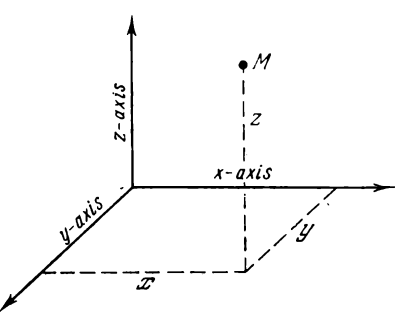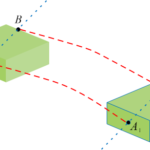Learn about frames of reference in physics. It explains that a frame of reference is a body that is considered fixed for a given problem and with respect to which the positions of all other bodies are specified.
Frames of reference
Physics we all know is the study of physical phenomena in nature. We all know that the Mechanical Motion of bodies is the simplest form of physical phenomenon in nature. We also know the concept of a point object where the size of the body under study can be neglected when we describe its motion.
Now if we want to know the motion of this point object or material body then we must have knowledge about its position in space at all instants of time. For this, we need a reference point or frame of reference with respect to which we can observe the motion of the object. This is what we would be exploring in this article.
Introduction
We know that space when it is not under the influence of large objects like stars, planets, etc., is uniform and isotopic. This means that all the points in space are equivalent and all the directions in space are also equivalent.
Since space has no preferred location and no preferred direction we can not use it as a reference for determining the position of a particle. Instead of using space as a reference point, we can determine the position of one body with respect to another body.
To understand it further consider the example of a pot in a room. We can determine its position by measuring its distance from the floor and from two mutually perpendicular walls.
In general, our experience shows us that we need to specify three coordinates in order to completely define the position of a particle in space with respect to any reference point.
What is a Frame of reference?
So, what is a frame of reference?
A frame of reference is a body which is regarded as fixed for a given problem and with respect to which the positions of all the other bodies are specified.
While any object for example Earth, the moon, or trees around can serve as a frame of reference, some frames are more convenient than others for certain problems. For example, when we want to analyze the motion of a bicycle we might find the frame of reference attached to Earth more convenient than the one that is attached to either the Sun or Moon.
The figure given below shows a reference frame. It has three mutually perpendicular straight lines known as axes of the coordinates. This figure shows a cartesian coordinate system.

Any point in space can be located by determining its three coordinates with respect to the origin of the reference system. Three coordinates required for finding the position of any point in space are
- x-coordinate
- y-coordinate
- z-coordinate
The state of rest or motion of any object under observation can be specified w.r.t. our chosen frame of reference. When the object under consideration is in the state of rest it means that it occupies the same position in the frame of reference with the passage of time. The object is said to be in a state of motion if it changes its position w.r.t. time.
At this point, it is important to note that
- All observations and measurements in physics are made relative to a frame of reference.
- A suitable frame of reference is chosen for making observations and measurements while solving problems in physics.
- When making observations for future predictions, it is essential to note the frame of reference from which the observations were made.
References and further reading
- B. M. Yavorsky, A. A. Pinsky-Fundamentals of Physics. 1-MIR Publishers (1975)
- Rest and Motion in Physics
- Isotropy and Uniformity in Space
- Uniformity of Time in physics





